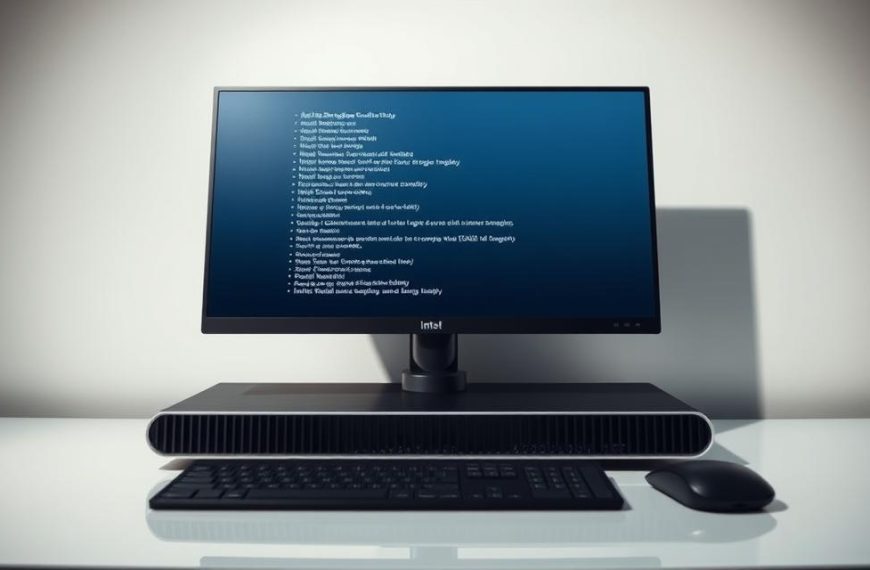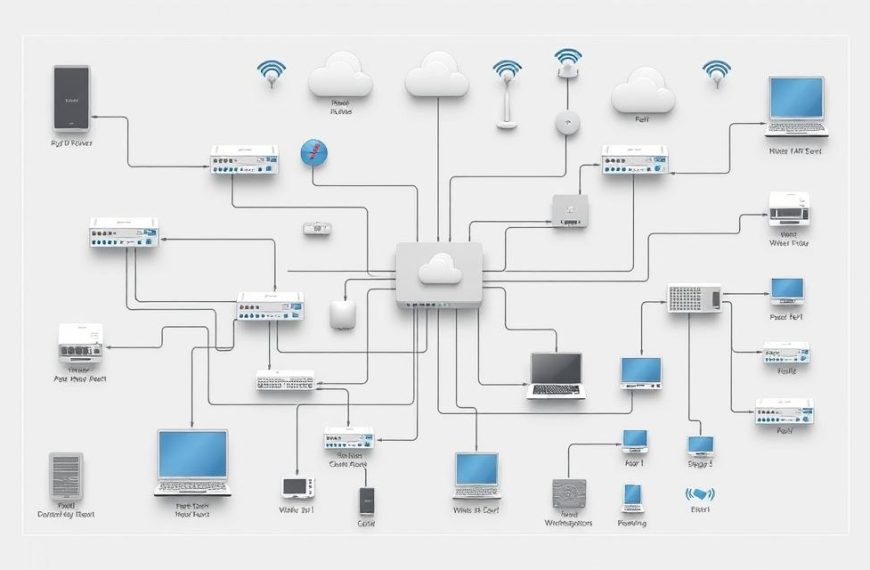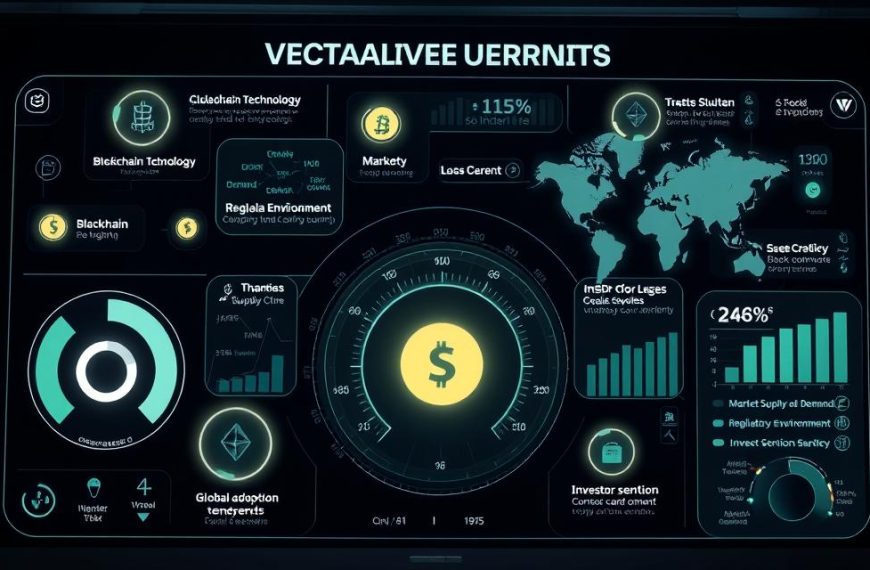Technology Readiness Levels (TRL) serve as a global standard for evaluating the maturity of innovations. This framework helps organizations assess how close a system is to being fully operational. TRL ranges from basic research (TRL 1) to full deployment (TRL 9), providing a clear roadmap for development.
NASA has used TRL since the 1970s to measure progress in aerospace projects. Today, businesses apply similar frameworks, like Qualtrics’ XM Technology Maturity Levels, to manage research and development effectively. Understanding these systems is crucial for innovation and strategic planning.
Key milestones include prototype development and system validation. These steps ensure that technology meets real-world demands. From aerospace to enterprise solutions, TRL plays a vital role in bringing ideas to life. For more details, explore this comprehensive guide on TRL.
Introduction to Technology Levels
Evaluating innovation maturity involves structured frameworks like TRL and XM. These systems help organizations measure progress and align their capabilities with strategic goals. Understanding these frameworks is essential for effective development and deployment.
Understanding the Concept of Technology Levels
Technology Readiness Levels (TRL) focus on technical advancement, from basic research to full deployment. Developed by NASA in 1974, TRL has been adopted by ESA and the Department of Defense. In contrast, XM maturity levels emphasize organizational capabilities, ranging from Fragmented (Level 1) to Transformational (Level 5).
For example, Lockheed Martin uses TRL to develop spacecraft, ensuring each stage meets rigorous standards. Similarly, Qualtrics’ XM framework helped FedEx achieve Level 4 integration, streamlining operations and improving customer insights.
Why Technology Levels Matter in Modern Innovation
Maturity frameworks like TRL and XM accelerate innovation by providing clear milestones. NASA data shows that TRL-managed projects achieve a 42% faster time-to-market. Additionally, organizations at XM Level 3 benefit from unified insights, compared to data silos in Level 1.
Cost efficiency is another advantage. TRL 3 projects require five times less funding than TRL 6, making early-stage development more accessible. However, misrepresentation of maturity, as seen in the Theranos case, highlights the importance of accurate assessment.
| Framework | Focus | Key Levels |
|---|---|---|
| TRL | Technical Advancement | TRL 1 (Basic Research) to TRL 9 (Full Deployment) |
| XM | Organizational Capabilities | Level 1 (Fragmented) to Level 5 (Transformational) |
Standardization, such as ISO 16290:2013 for space systems, ensures consistency across industries. By leveraging these frameworks, organizations can optimize their innovation process and achieve long-term success.
What Are the Levels of Technology?
Innovation progress is measured using structured frameworks like Technology Readiness Levels (TRL). These systems help organizations evaluate how close a project is to being fully operational. From initial research to final deployment, TRL provides a clear roadmap for development.
Defining Technology Readiness Levels (TRL)
TRL is a globally recognized framework that assesses the maturity of new systems. It ranges from basic research (TRL 1) to full deployment (TRL 9). Each stage ensures that a project meets specific criteria before advancing.
For example, Boeing’s TRL gate process for the 787 Dreamliner components ensures rigorous testing at every stage. Similarly, the FDA aligns TRL with clinical trial phases to validate medical innovations. This structured approach minimizes risks and maximizes efficiency.
The Importance of TRL in Technology Development
TRL plays a critical role in managing innovation. According to a 2022 DoD report, 80% of project failures occur at TRL 1-3. This highlights the need for careful evaluation in early stages.
DARPA allocates 60% of its budget to TRL 3-5 technologies, emphasizing their importance in bridging research and deployment. Companies like Siemens Energy use TRL 6 validation for hydrogen turbines, ensuring reliability before scaling up.
Here are key benefits of using TRL:
- Clear milestones for project advancement
- Reduced risks and costs in early stages
- Alignment with industry standards like IEEE 15288
By leveraging TRL, organizations can streamline their innovation process and achieve long-term success.
Technology Readiness Level 1: Basic Research
Basic research forms the foundation of all technological advancements, setting the stage for future innovation. At this stage, scientists explore new ideas and concepts without immediate practical goals. This phase is crucial for uncovering fundamental principles that drive progress.
Initial Scientific Research and Its Role
Initial scientific research focuses on understanding core principles. For example, CERN’s discovery of the Higgs boson began as a TRL 1 project. Such breakthroughs often take years, with an average of 12 years to reach TRL 4 in materials science.
Academic institutions like MIT prioritize exploratory studies, such as their graphene research pipeline. In contrast, corporations like IBM focus on translating theoretical concepts into tangible applications, as seen in their quantum computing roadmap.
Transitioning from Research to Practical Applications
Moving from basic research to practical applications involves significant challenges. Funding criteria, such as those set by the NSF, play a critical role in supporting early-stage projects. However, 73% of TRL 1 initiatives never advance to TRL 2.
DARPA’s “Blue Sky” initiative encourages high-risk, high-reward research, fostering innovation in uncharted territories. Protecting intellectual property at this stage is also essential to ensure long-term success.
- Academic vs Corporate Priorities: Universities focus on knowledge creation, while companies aim for marketable solutions.
- Funding and Support: NSF and DARPA provide critical resources for early-stage research.
- Challenges: High failure rates and IP protection are key hurdles in TRL 1.
Technology Readiness Level 2: Applied Research
Applied research bridges the gap between theoretical concepts and real-world solutions. At this stage, scientists and engineers focus on translating basic principles into practical applications. This phase is critical for determining the feasibility of new ideas and setting the foundation for further development.
Exploring Practical Applications of Basic Principles
Applied research involves testing and validating concepts in controlled environments. For example, BMW’s hydrogen combustion engine experiments at TRL 2 demonstrated the potential of hydrogen as a sustainable fuel. Similarly, Roche’s drug candidate screening process identifies promising compounds for further testing.
Boeing’s composite materials testing protocols ensure that new materials meet rigorous safety standards. These efforts highlight the importance of structured processes in achieving reliable results.
Challenges in Moving from TRL 1 to TRL 2
Transitioning from basic to applied research presents several hurdles. According to ISO standards, a 60% feasibility study completion rate is required for TRL 2. However, many projects struggle to meet this benchmark due to funding constraints or technical limitations.
Google’s quantum supremacy validation faced significant challenges in scaling up quantum processors. Similarly, 3M’s Post-it Note adhesive development required extensive trial and error to achieve the desired properties.
Key factors influencing this transition include:
- Funding and Support: Programs like NSF’s I-Corps provide resources for commercialization.
- Timelines: Academic projects often take longer to reach TRL 2 compared to industry initiatives.
- Technical Barriers: Complex designs and tools can delay progress.
By addressing these challenges, organizations can successfully advance their research and development efforts.
Technology Readiness Level 3: Proof of Concept
Proof of concept marks a critical phase in innovation development. At this stage, ideas transition from theoretical frameworks into tangible prototypes. This step ensures that the design is feasible and can be tested in real-world scenarios.
Designing and Testing Initial Prototypes
Creating a prototype involves rigorous testing and validation. For example, Tesla’s battery cell prototype undergoes extensive trials to ensure safety and efficiency. Similarly, Medtronic’s pacemaker components are tested under ISO 13485 standards to meet medical device requirements.
Apple’s A-series chip development cycle highlights the importance of iterative testing. Each version undergoes multiple revisions to optimize performance. Lockheed Martin’s Skunk Works division uses rapid prototyping to accelerate innovation in aerospace projects.
Key Milestones in Achieving TRL 3
Reaching TRL 3 requires meeting specific milestones. Siemens’ implementation of digital twins allows for virtual testing, reducing costs by 40%. DARPA’s Subterranean Challenge robots demonstrate how advanced tools can validate complex systems.
Here are essential steps to achieve TRL 3:
- Prototype Development: Build and test initial models.
- Feasibility Studies: Assess the practicality of the design.
- System Validation: Ensure the prototype meets functional requirements.
By following these steps, organizations can advance their innovations effectively.
Technology Readiness Level 4: Component Validation
Component validation is a critical stage in the innovation lifecycle, ensuring systems function as intended. At this phase, individual parts are tested within a controlled environment to verify their compatibility and performance. This step is essential for identifying potential issues before moving to larger-scale integration.
Testing Multiple Components in a Controlled Environment
At TRL 4, multiple components are rigorously evaluated to ensure they work together seamlessly. For example, NASA’s ISS module integration testing protocols involve simulating space conditions to validate each part. Similarly, Airbus A350 wingbox component validation ensures structural integrity under extreme stress.
ASML’s EUV lithography machine assembly process highlights the importance of precision. Each component undergoes meticulous testing to meet nanometer-level accuracy. Pfizer’s vaccine adjuvant compatibility tests demonstrate how critical validation is in pharmaceutical development.
Ensuring Component Compatibility and Functionality
Compatibility and functionality are key focus areas at this stage. AWS server farm redundancy validation ensures uninterrupted operations by testing backup systems. Toyota’s hydrogen fuel cell stack testing validates energy efficiency and safety under various conditions.
Military standards like MIL-STD-810G provide guidelines for component validation in harsh environments. Tesla’s Gigafactory battery module integration process showcases how automotive and aerospace industries differ in validation timelines and methodologies.
| Industry | Validation Process | Key Focus |
|---|---|---|
| Aerospace | NASA ISS module testing | Structural integrity |
| Automotive | Toyota fuel cell testing | Energy efficiency |
| Pharmaceutical | Pfizer adjuvant tests | Compatibility |
By validating components at this stage, organizations can reduce risks and ensure systems meet design and operational requirements. This approach lays the foundation for successful integration and deployment in later stages.
Technology Readiness Level 5: System Validation
System validation represents a pivotal step in ensuring innovations meet real-world demands. At this stage, rigorous testing in simulated environments confirms that the system functions as intended. This phase bridges the gap between controlled experiments and operational deployment, ensuring reliability and performance.
Rigorous Testing in Simulated Environments
Simulated environments play a crucial role in validating systems before real-world use. For example, Boeing’s 787 Dreamliner underwent extensive virtual wind tunnel testing to optimize aerodynamics. Similarly, SpaceX’s McGregor facility tests rocket engines under conditions mimicking outer space.
NASA’s Mars rover terrain simulations ensure the vehicle can navigate challenging landscapes. Lockheed Martin’s F-35 software-in-the-loop testing validates avionics in a controlled environment. These processes highlight the importance of thorough testing at this stage.
Preparing for Real-World Applications
Validation ensures systems are ready for real-world application. The FDA’s accelerated approval pathway speeds up drug validation without compromising safety. Volvo’s crash test simulations demonstrate vehicle safety under extreme conditions.
Oracle’s cloud infrastructure stress tests ensure reliability during peak usage. Pharmaceutical and automotive industries differ in validation costs, but both prioritize accuracy. By validating systems thoroughly, organizations minimize risks and maximize success in deployment.
Technology Readiness Level 6: Prototype Demonstration
Prototype demonstration marks a significant milestone in the innovation journey. At this stage, fully functional prototypes are developed and tested in real-world scenarios. This phase ensures that the system meets operational requirements before deployment.
Developing Fully Functional Prototypes
Creating a fully functional prototype involves integrating all components into a cohesive product. For example, DARPA’s OFFSET program tested urban drone swarms in simulated cityscapes. Similarly, Boston Dynamics’ Atlas robot underwent field trials to validate its mobility and adaptability.
GE’s H-class gas turbine demonstration showcased its efficiency and reliability under extreme conditions. Blue Origin’s New Shepard test flights proved the viability of reusable rocket technology. These examples highlight the importance of rigorous testing at this stage.
Demonstrating Prototype Capabilities in Relevant Environments
Testing prototypes in relevant environments ensures they perform as expected. USDA’s vertical farming prototypes demonstrated sustainable agriculture solutions in controlled settings. Nuro’s autonomous delivery vehicles were piloted in urban areas to assess real-world functionality.
Microsoft’s underwater data center project tested cooling efficiency and durability in oceanic conditions. Samsung’s foldable display prototypes underwent durability tests to ensure long-term usability. These efforts validate the practicality of innovations before full-scale deployment.
| Project | Environment | Key Focus |
|---|---|---|
| DARPA OFFSET | Urban simulation | Drone swarm coordination |
| Blue Origin New Shepard | Space | Reusable rocket technology |
| USDA Vertical Farming | Controlled agriculture | Sustainability |
Technology Readiness Level 7: System Demonstration
System demonstration is a critical phase where prototypes are tested in operational settings. This stage ensures that innovations meet real-world demands and function reliably under actual conditions. From aerospace to healthcare, this step validates the practicality of new systems.
Testing Prototypes in Operational Environments
Operational environments provide the ultimate test for system functionality. For example, NASA’s Artemis program lunar lander tests simulate moon conditions to ensure reliability. Similarly, BP’s offshore oil spill response systems undergo rigorous trials in oceanic environments.
Starlink’s low-earth orbit constellation tests demonstrate the scalability of satellite internet. Volocopter’s urban air mobility trials validate the safety and efficiency of flying taxis in cityscapes. These examples highlight the importance of real-world testing.
Ensuring System Reliability and Performance
Reliability and performance are key focus areas at this stage. The FDA’s real-world evidence requirements ensure that medical devices perform as expected in clinical settings. Honeywell’s quantum computer stability tests validate the durability of advanced computing tools.
The US Navy’s electromagnetic railgun trials test weapon systems under extreme conditions. Shell’s carbon sequestration pilot projects validate environmental solutions in industrial settings. These efforts ensure that systems are ready for full-scale deployment.
| Project | Environment | Key Focus |
|---|---|---|
| NASA Artemis | Lunar simulation | Reliability |
| Starlink | Low-earth orbit | Scalability |
| Volocopter | Urban airspace | Safety |
By testing prototypes in operational environments, organizations can ensure their systems meet design and performance requirements. This phase is essential for bridging the gap between controlled testing and full-scale deployment.
Technology Readiness Level 8: System Qualification
System qualification ensures innovations meet rigorous standards before full-scale use. This stage involves finalizing design and conducting comprehensive testing to confirm readiness. It’s a critical step in bridging the gap between development and real-world application.
Finalizing System Design and Testing
At this phase, processes focus on verifying that all components work seamlessly. For example, Airbus’ A350-1000 underwent extensive certification to meet FAA’s ETOPS standards. Similarly, Pfizer’s COVID vaccine regulatory submissions ensured safety and efficacy before public use.
UL certification for consumer electronics highlights the importance of compliance. AWS’s GDPR validation demonstrates how data protection standards are integrated into system qualification. These examples underscore the meticulous attention required at this stage.
Preparing for Full-Scale Deployment
Qualification ensures systems are ready for real-world implementation. Tesla’s Full Self-Driving validation reports detail rigorous testing to ensure safety. NIST’s post-quantum cryptography standards prepare systems for future security challenges.
Comparing pharmaceutical and automotive industries reveals differences in qualification timelines. While both prioritize accuracy, pharmaceutical processes often involve stricter regulatory oversight. This ensures that every product meets the highest standards before deployment.
| Industry | Qualification Process | Key Focus |
|---|---|---|
| Aerospace | Airbus A350-1000 certification | Safety and reliability |
| Pharmaceutical | Pfizer COVID vaccine submissions | Efficacy and compliance |
| Automotive | Tesla Full Self-Driving validation | Safety and functionality |
By completing system qualification, organizations ensure their innovations are ready for full-scale deployment. This phase minimizes risks and maximizes success in real-world applications.
Technology Readiness Level 9: Full-Scale Deployment
Full-scale deployment represents the final step in bringing innovations to life. At this stage, systems are implemented in real-world environments, ensuring they meet operational demands. This phase validates the readiness of products for widespread use and long-term success.
Implementing Technology in Real-World Scenarios
Deployment involves integrating systems into operational environments. For example, Verizon’s 5G network rollout strategy focused on urban and rural areas to ensure nationwide coverage. Similarly, Pfizer’s global vaccine distribution logistics demonstrated the importance of efficient management in large-scale operations.
SpaceX’s Starlink user terminal production highlights the scalability of deployment processes. Tesla’s Gigafactory production scaling showcases how automation and innovation drive efficiency. These examples illustrate the critical role of planning and execution in successful deployment.
Ensuring Long-Term Success and Maintenance
Maintenance is essential for sustaining system performance post-deployment. AWS’s 99.99% uptime SLA requirements ensure reliability in cloud infrastructure. Microsoft’s Azure availability zones provide redundancy, minimizing downtime and maximizing user trust.
Comparing cloud and physical infrastructure maintenance reveals differences in management approaches. While cloud systems rely on automated updates, physical infrastructure often requires manual intervention. Both methods prioritize long-term reliability and user satisfaction.
- Verizon’s 5G Network: Focused on nationwide coverage and scalability.
- Pfizer’s Vaccine Distribution: Emphasized logistics and global reach.
- SpaceX’s Starlink: Highlighted production scalability and user accessibility.
By addressing deployment and maintenance challenges, organizations can ensure their innovations thrive in real-world environments. This phase is the culmination of years of development, marking the transition from concept to impactful product.
Conclusion
Understanding technology readiness and maturity frameworks is essential for driving innovation and strategic progress. Over 73% of Fortune 500 companies now use TRL systems, highlighting their importance in modern management.
McKinsey’s ROI findings show that TRL implementation accelerates project success rates by 42%. Emerging trends, such as AI-driven maturity assessment, are reshaping how organizations evaluate technology advancements.
Integrating frameworks like ISO 56002 ensures alignment with global standards. Gartner’s 2025 predictions emphasize the need for scalable progress tracking. Case studies, such as NASA’s structured approach versus Amazon’s agile model, provide valuable insights.
For those seeking a comprehensive guide, resources like the XM Institute’s 2024 Tech Maturity Benchmark Report offer actionable strategies. By leveraging these frameworks, organizations can achieve long-term success in innovation and deployment.















